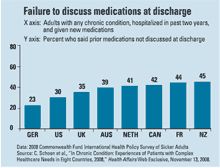Growing ca burden strikes developing countries
Cancer is predicted to become the leading cause of death worldwide in the year 2010, according to the latest edition of the World Cancer Report released by the International Agency for Research on Cancer. The burden from cancer will not be shared equally, though. Researchers forecast that low- and medium-resourced countries that are least equipped to deal with rising rates of cancer in the population will be hit hardest.
Cancer is predicted to become the leading cause of death worldwide in the year 2010, according to the latest edition of the World Cancer Report released by the International Agency for Research on Cancer. The burden from cancer will not be shared equally, though. Researchers forecast that low- and medium-resourced countries that are least equipped to deal with rising rates of cancer in the population will be hit hardest.
The global burden of cancer doubled between 1975 and 2000, the IARC report states. It is expected to double again by 2020 and nearly triple by 2030. Th is increase would translate to 26 million new diagnoses of cancer per year by 2030, 17 million cancer-related deaths per annum, and 75 million people living with a diagnosis of cancer within the past five years (See “Developing nations face cancer tsunami,” December 2008, page 1).
In low-resourced settings, 80% of patients don’t present until their cancer is so advanced that palliation is the only option, said Peter Boyle, PhD, DSc, director of the IARC and lead author of the report. Some 30 low-resourced counties have no radiotherapy facilities at all, and 29 countries in Africa bar the import of narcotics needed for pain relief.
“The rapid increase in the cancer burden presents a crisis for public health and health systems worldwide,” Dr. Boyle said. “A major issue for all countries will be how to find significant resources to treat all cancer patients effectively and to provide palliation and supportive terminal care for the large number of cases that will be diagnosed in the coming years.”
The message from the IARC is not entirely negative. Dr. Boyle stressed the potential impact of preventive strategies, such as tobacco control, reduction of alcohol consumption, vaccinations for hepatitis B and human papilloma virus (HPV), and screening and awareness, on reducing the global cancer burden.
Chronic care disparities
Nonetheless, the quality of care received by chronically ill patients in the richer nations still varies widely, according to researchers from The Commonwealth Fund, a private foundation supporting research on health policy reform (Health Affairs 28: 1-16, 2009).
The study’s authors surveyed 7,500 adults in eight countries, including Australia, Germany, the UK, and the U.S. who had at least one of seven chronic diseases (hypertension, heart disease, diabetes, arthritis, chronic lung problems, depression, or cancer). They found significant differences among the eight countries in terms of access, safety, and care efficiency, with US patients faring particularly badly and Dutch patients most likely to report rapid access to good quality services.

More than half of the U.S. patients surveyed (54%) went without recommended care, failed to fill a prescription, or did not see a doctor when sick because of the cost of doing so, compared with just 7% of Dutch patients and 13% of UK patients. U.S. patients were also more likely to report poorly coordinated care (34%) or personal experience of a medical error (34%) than patients from any of the other countries (see Chart, page 6).
Approximately one quarter (26%) of US and Canadian patients reported sameday access to doctors when they were sick, and one-fourth or more reported long waits. In contrast, about half or more of Dutch (60%), New Zealand (54%), and UK (48%) patients were able to get sameday appointments.
All countries could still improve the level of information and support given to chronically ill patients when they leave the hospital and move back to the rest of the care system, said Cathy Schoen, senior vice president of The Commonwealth Fund. For example, despite the risk of adverse drug reactions, patients leaving the hospital with new medications oft en reported that no one had talked to them about all the drugs they were taking.
“More than one-third of patients in all countries report gaps in discharge planning when they leave the hospital,” Ms. Schoen said.
How Supportive Care Methods Can Improve Oncology Outcomes
Experts discussed supportive care and why it should be integrated into standard oncology care.